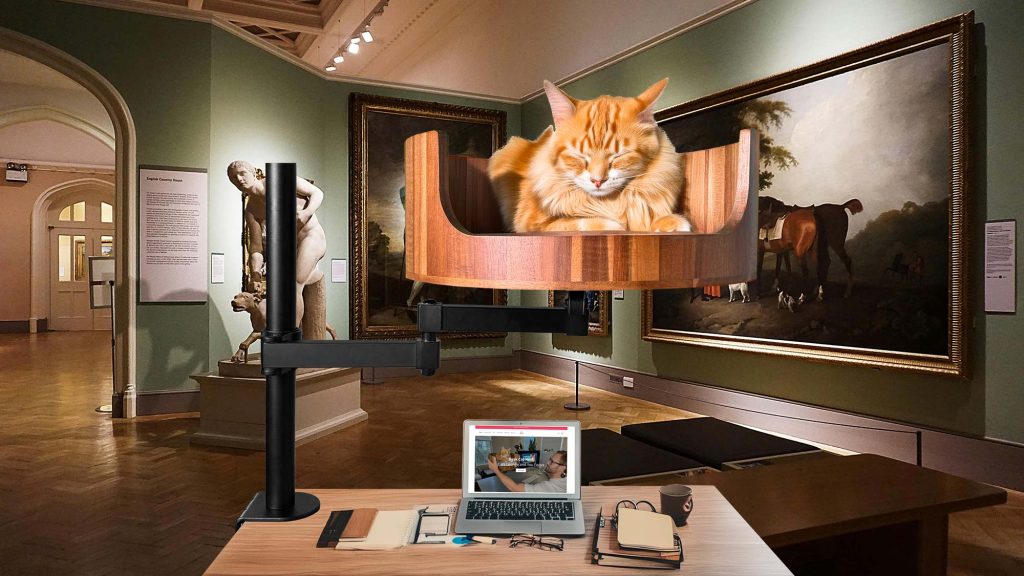For many cat owners, one common but frustrating behavior is their feline friend attacking their feet. Whether it’s while walking around the house or trying to relax in bed, this behavior can be both surprising and painful. Understanding why cats do this and how to prevent it can lead to a more harmonious relationship between you and your pet.
In this article, we will delve into the reasons behind why cats attack feet, exploring their natural instincts and how they view movement. We will also provide tips and strategies for redirecting this behavior, including ways to properly play with your cat and keep them engaged. By understanding the root cause of this behavior and implementing positive reinforcement techniques, you can create a happier and healthier environment for both you and your furry companion.
1. Cats may attack feet out of boredom, a desire for play, or as a way to assert dominance.
2. Understanding a cat’s body language and behavior cues can help prevent foot attacks.
3. Providing mental and physical stimulation through toys, interactive play, and scratching posts can redirect a cat’s aggression.
4. Positive reinforcement and rewarding good behavior can help modify a cat’s attacking tendencies.
5. Seeking professional advice from a veterinarian or animal behaviorist can offer further insights and solutions to address a cat’s aggressive behavior towards feet.
Understanding Cat Behavior
Feline behavior can be complex and sometimes puzzling, especially when it comes to actions like attacking feet. Understanding why cats exhibit certain behaviors can help owners address and prevent future incidents. Cats are predatory animals by nature, and attacking moving objects, like feet, can trigger their hunting instincts. This behavior can also be a result of boredom, pent-up energy, or lack of mental stimulation. By recognizing the root causes of cat attacking feet, owners can implement strategies to redirect their pet’s behavior in a positive direction.
Desk Cat Nest
Creating a designated space for your cat to rest and play can help minimize instances of foot attacks. A desk cat nest, consisting of a cozy bed, scratching post, toys, and interactive puzzles, can provide a safe and stimulating environment for your feline friend. Place the desk cat nest near your workspace to keep your cat engaged and entertained while you work. By encouraging your cat to use the desk cat nest for play and rest, you can help redirect its energy away from attacking feet and towards more appropriate behaviors.
Training and Behavior Modification
Training your cat to refrain from attacking feet requires patience, consistency, and positive reinforcement. Use clicker training or treats to reward your cat for exhibiting calm and non-aggressive behavior. Redirect your cat’s attention towards toys or a scratching post whenever it shows signs of wanting to attack feet. It’s essential to avoid punishing or scolding your cat for attacking feet, as this can lead to fear or anxiety. Instead, focus on reinforcing desirable behaviors and providing alternative outlets for your cat’s energy and instincts.
Seeking Professional Help
If your cat’s foot attacks are persistent or aggressive, seeking the help of a professional animal behaviorist or veterinarian may be necessary. They can assess your cat’s behavior, identify underlying issues, and provide personalized strategies to address the problem. In some cases, medication or specialized training may be recommended to help manage your cat’s behavior effectively. Remember that every cat is unique, and what works for one feline may not work for another. Consulting with a professional can help tailor a solution that best suits your cat’s individual needs.
FAQ
How can the Desk Cat Nest help with my cat attacking my feet?
The Desk Cat Nest provides a comfortable and elevated space for your cat to perch, keeping them away from your feet while you work. Cats often attack feet when they are bored or seeking attention, so providing them with a designated place to relax can help reduce this behavior.
Is the Desk Cat Nest easy to assemble?
Yes, the Desk Cat Nest is easy to assemble and does not require any special tools. Simply follow the instructions included in the packaging for quick and hassle-free setup.
Will my cat actually use the Desk Cat Nest?
While every cat is different, many cats enjoy having their own space to retreat to. The Desk Cat Nest is designed to be cozy and inviting, making it a likely favorite spot for your furry friend.
Can the Desk Cat Nest accommodate larger cats?
Yes, the Desk Cat Nest is spacious enough to accommodate most cats, including larger breeds. The sturdy construction and ample space make it suitable for cats of all sizes.
Is the Desk Cat Nest easy to clean?
Yes, the Desk Cat Nest is made of easy-to-clean materials, making maintenance a breeze. Simply wipe down the surface with a damp cloth or gentle pet-safe cleaner as needed to keep it looking fresh and tidy.
In conclusion, if you are dealing with a cat who regularly attacks your feet, investing in a Desk Cat Bed is a valuable choice. By providing your cat with a comfortable and designated sleeping space, you can help reduce their boredom and anxiety, ultimately decreasing the likelihood of them attacking your feet. The Desk Cat Bed offers a cozy spot for your feline friend to rest and relax, promoting better behavior and a happier household overall. Say goodbye to unwanted foot attacks by providing your cat with a comfortable sleeping space like the Desk Cat Bed.


